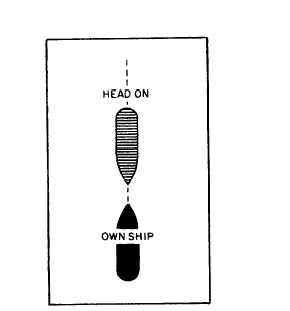| |
made to revise and simplify them. Following the signing
of the 72 COLREGS, a new effort was made to unify
and update the various Inland Rules. This effort was also
aimed at making the Inland Rules as similar as possible
to the 72 COLREGS. The Navigation Rules,
International-Inland, COMDTINST M16672.2B now
in effect, is the result.
Inland Rules vary from International Rules
primarily because of the addition of certain extra
precautions. In our discussion of basic rules, each rule
stated is the same for both international and inland
waters unless a distinction was pointed out. When the
term power-driven vessel was mentioned, for example,
it meant in both International and Inland, any vessel
propelled by machinery as distinguished from a sailing
vessel.
The basic rules concerning displays of navigational
lights were given in chapter 2.
STEERING AND SAILING RULES
You must understand the steering and sailing rules
and be able to apply them to various traffic situations.
Although all Rules of the Road are important, the
steering and sailing rules are the most essential to know
to avoid collision. The risk of collision can be
considered to exist if the bearing of an approaching
vessel does not appreciably change.
NOTE
When you are approaching a very large
vessel, or when you are in close quarters, a
bearing change alone does not necessarily mean
that a collision cannot happen.
We will illustrate the three situations in which the
danger of collision might exist: head-on, crossing, and
overtaking. The illustrations and the following summary
will help you learn the rules and appropriate actions to
be taken in each situation.
Meeting (Head-On) Situation
When two ships meet head on, or nearly so (fig.
5-14), each ship must change course to starboard and
pass port to port. In international waters, a whistle signal
is sounded only when a course change is actually made.
If the meeting ships are already far enough off each other
to pass clear on their present courses, no signal is
sounded.
Figure 5-14.–Meeting (head-on) situation.
Crossing Situation
When two power-driven vessels are crossing so as
to involve risk of collision (fig. 5-15), the vessel having
the other to starboard is the give way vessel and must
avoid the stand on vessel.
A sailing vessel has the right-of-way over
power-driven vessels except when the sailing vessel is
overtaking and the power-driven vessel is engaged in
fishing, is not under command, or is restricted in its
ability to maneuver.
Figure 5-15.–Crossing situation.
5-19
|


